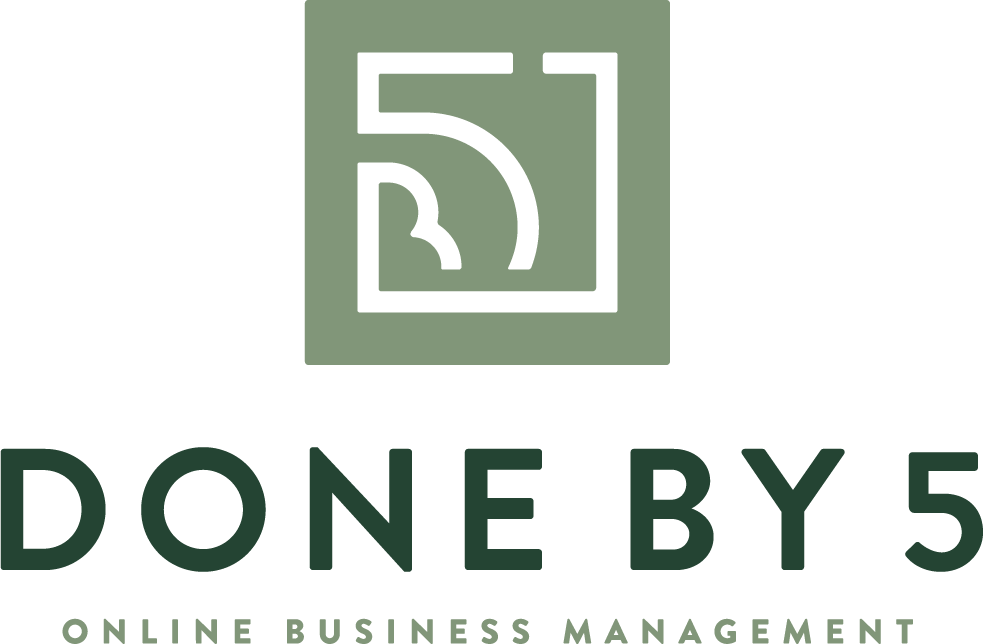Setting Your Bookkeeping Up for Success: A Small Business Owner’s Guide
Heads up! Some links in this post are affiliate links, which means if you click on them and make a purchase, I may earn a small commission (at no extra cost to you). I only recommend products and services that I truly use and love, and your support helps keep this blog running. As an Amazon Associate, I earn from qualifying purchases.
Starting a new business is exciting, but it also comes with a long list of administrative tasks. Beyond registering your business, obtaining the necessary licenses, and setting up operational processes, one of the most critical systems to establish early on is your bookkeeping system.
Without proper bookkeeping, you’ll struggle to track income and expenses, measure profitability, and prepare for tax season (yikes!). But with the right setup, you can easily manage your business finances and make smart decisions for growth.
Let’s walk through five simple steps to set your bookkeeping up for success from day one.
Step 1: Choose the Right Business Bank Account
One of the first things you’ll want to do is separate your personal and business finances. Opening a dedicated business bank account will make tax time easier, ensure you’re tracking expenses correctly, and give you a clear picture of your financial health.
I highly recommend Relay Bank if you’re a service-based business. Relay is designed for small businesses and integrates seamlessly with the Profit First method, which we use at Done By 5 and recommend to all of our clients. Profit First helps you manage cash flow by allocating funds into different accounts (e.g., operating expenses, taxes, owner’s pay).
✅ Action Item: Open a free business checking account with Relay Bank and set up separate accounts for different financial needs (e.g., income, expenses, taxes, and profit).
📖 Want to learn more about Profit First? Grab a copy of Profit First by Mike Michalowicz on Amazon or listen to it on Audible.
Step 2: Invest in QuickBooks Online (QBO) Early
Once you have a bank account, the next step is to track your income and expenses properly. While spreadsheets can work in the beginning, they quickly become overwhelming as your business grows.
I highly recommend QuickBooks Online because it’s the gold standard for small business bookkeeping. It allows you to:
Automatically import transactions from your bank
Categorize income and expenses with a few clicks
Run reports to see how much money you’re actually making
Be ready for tax season with properly organized records
💡 If you’re just getting started, you may want to wait until your first client payment comes in before signing up for QBO. But don’t wait too long! Having a bookkeeping system in place from the start will save you hours of frustration down the road.
✅ Action Item: Sign up for QuickBooks Online and start with a basic chart of accounts tailored to your industry.
Step 3: Connect Your Bank Accounts to QBO
Once you have QuickBooks set up, your next move is to connect your bank accounts.
🔗 Most major banks (including Relay Bank) allow direct integration with QuickBooks, meaning your transactions will automatically flow in.
This eliminates the need for manual data entry and ensures your books are always up-to-date. You’ll just need to review and categorize transactions regularly.
✅ Action Item: Connect your business bank account(s) to QuickBooks Online and set a reminder to review and categorize transactions at least once a week.
Step 4: Reconcile Your Books Monthly
Even with automated transactions, bookkeeping requires some regular maintenance to ensure everything is accurate. That’s where monthly reconciliation comes in.
🔎 Reconciliation means comparing your QuickBooks records with your bank statements to ensure all transactions match. If anything is missing or incorrect, this is your chance to fix it before it becomes a bigger problem.
📽️ Want to learn how to reconcile in QBO? Watch this QuickBooks Online Reconciliation Tutorial.
✅ Action Item: Set aside time each month to reconcile your accounts. You can also work with Done By 5if you want professional support.
Step 5: Establish a Monthly Admin Day
I wish I had started doing this from the beginning—it would have saved me so many headaches! Dedicating even a half-day per month to focus ON your business (instead of just working in it) will keep you organized and financially strong.
What should you do on your Monthly Admin Day?
Review and reconcile your books in QuickBooks Online
Categorize expenses and check for missing transactions
Set aside money for taxes (if following Profit First, allocate funds)
Review your financial reports to see what’s working (or not)
Pay upcoming bills and check cash flow for the next month
Organize digital files and update business records
🔗 Related Post: How to Create a Monthly Admin Day That Works for You.
✅ Action Item: Pick a recurring date each month for your Monthly Admin Day and add it to your calendar.
Final Thoughts: Start Strong, Stay Organized
Setting up a simple bookkeeping system early in your business journey doesn’t have to be overwhelming—it just takes a few key steps:
Open a dedicated business bank account Relay Bank
Sign up for QuickBooks Online to track finances
Connect your bank account for automatic transaction imports
Reconcile your books monthly to catch any errors
Establish a Monthly Admin Day to stay on top of finances
If you follow these steps, you’ll feel in control of your business finances, avoid tax-time stress, and set yourself up for sustainable growth.
💡 Want More Help? If you need support setting up QuickBooks, creating a customized bookkeeping system, or staying organized, let’s chat!
←BACK
DON’T MISS THE LATEST POSTS
BUSINESS
How an OBM Can Transform Your Online Business Operations →
PRODUCTIVITY
Why Every Online Entrepreneur Needs an OBM →
TOOLS
Scaling Your Online Business: A Guide to Working with an OBM →
BUSINESS
How an OBM Can Help Your Online Business Thrive →




